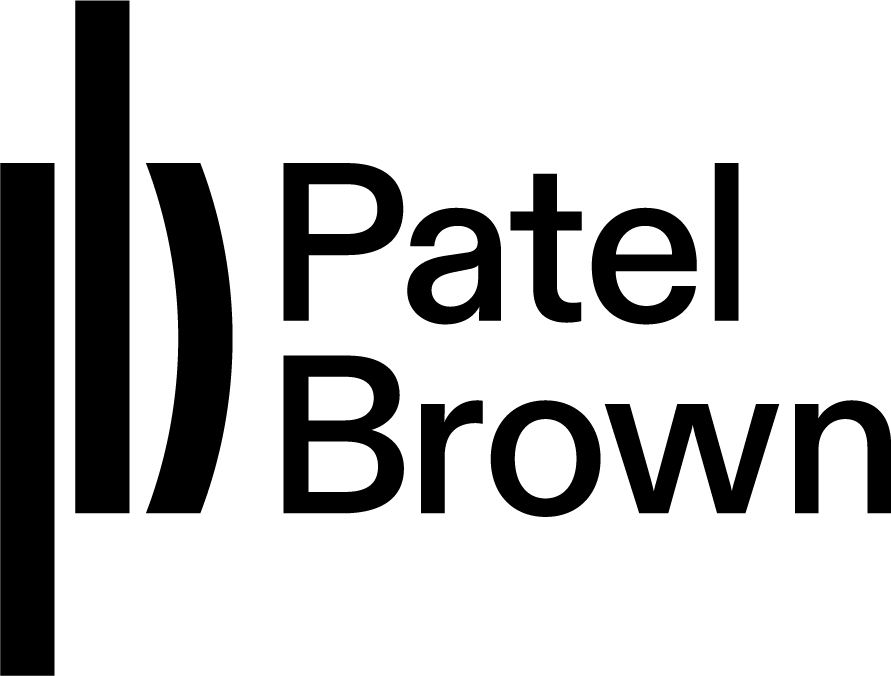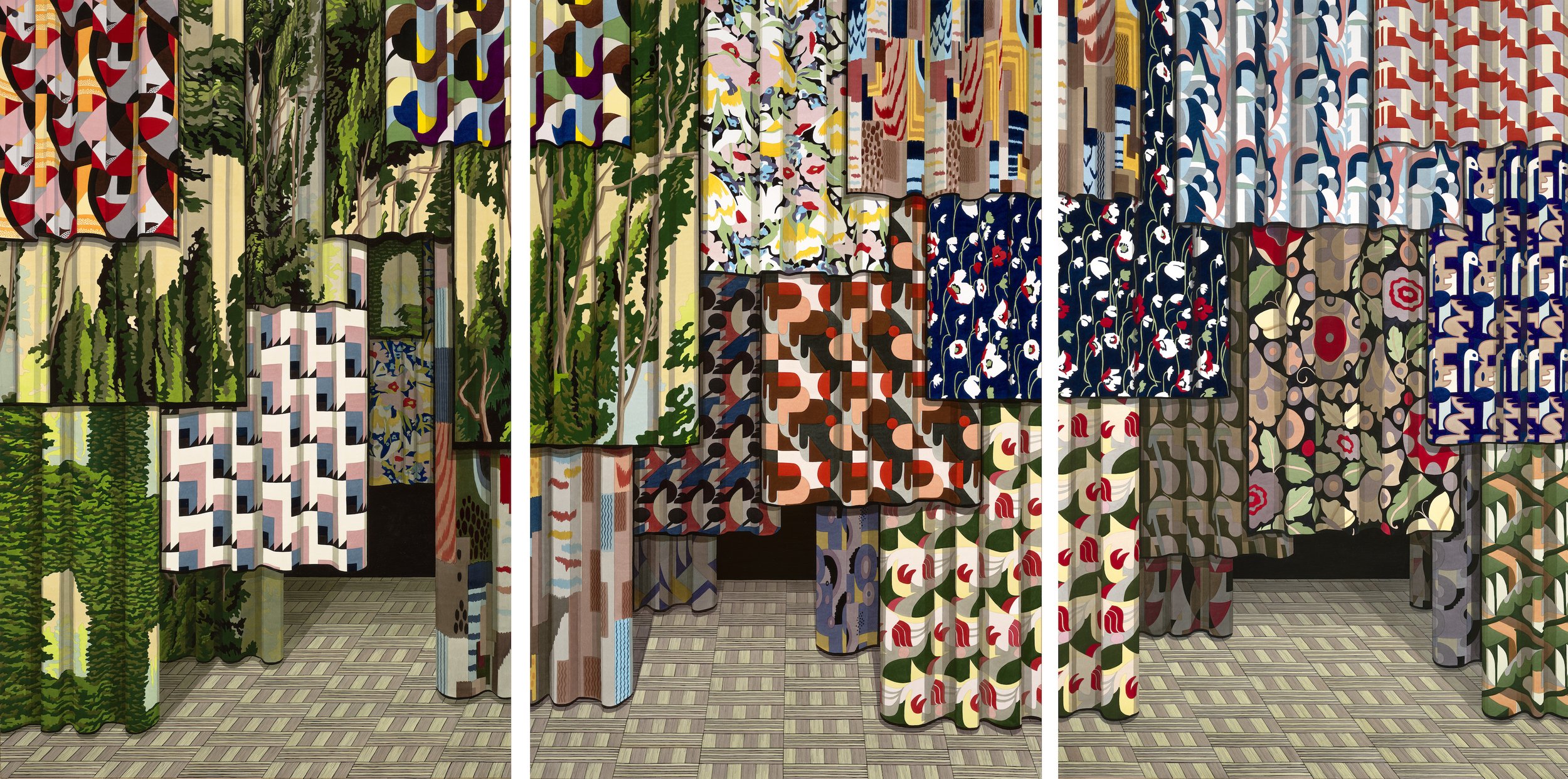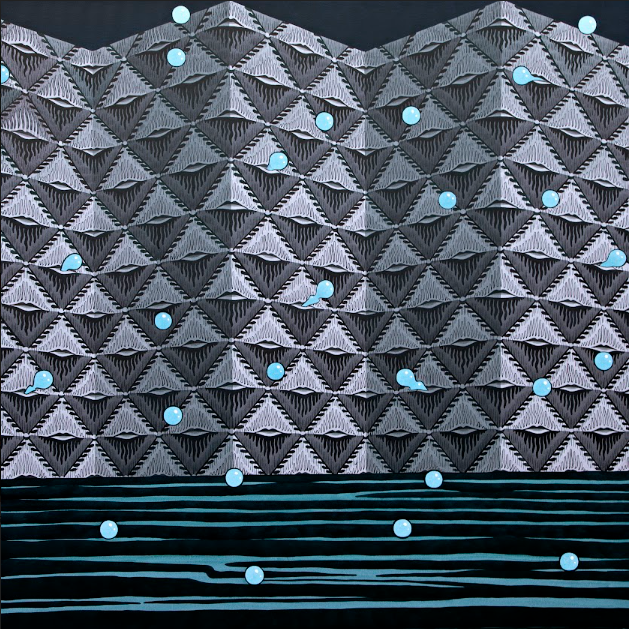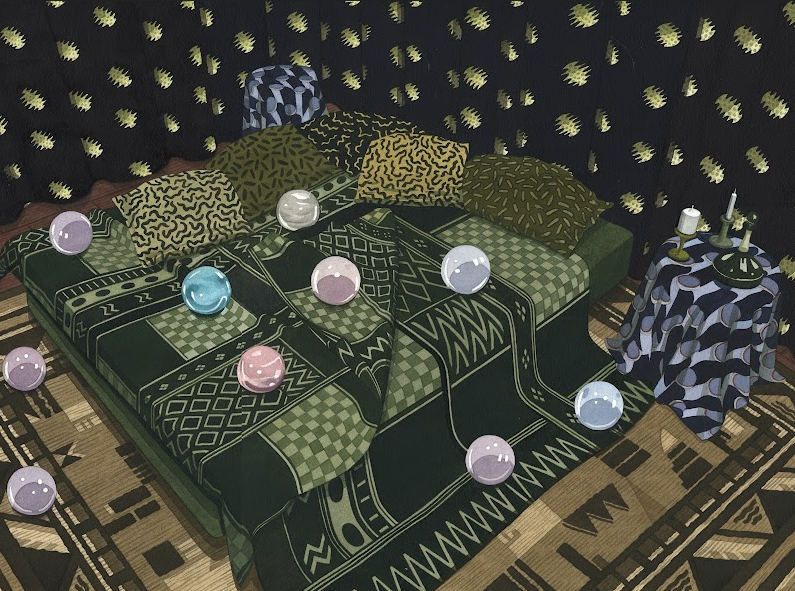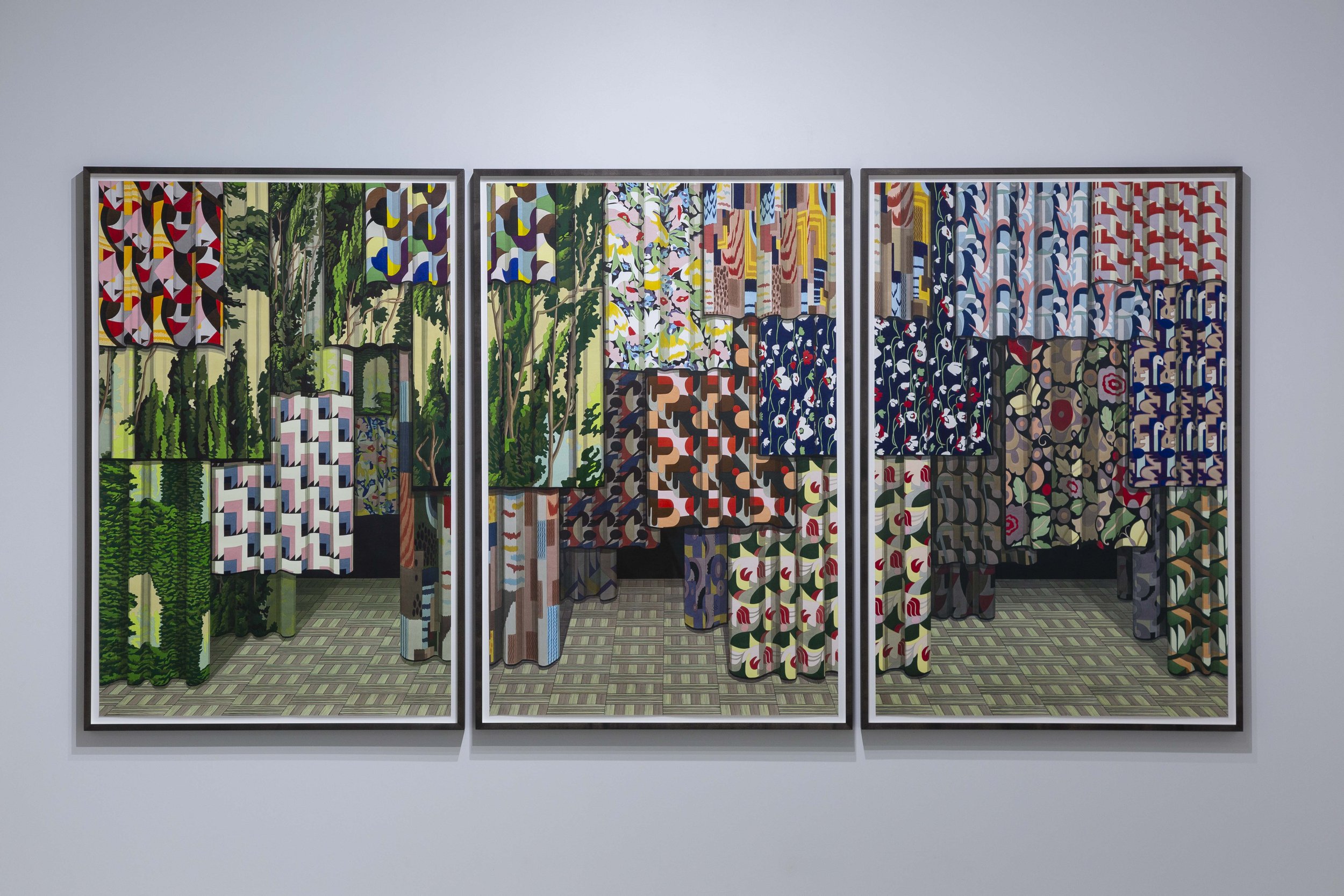PATEL BROWN GALLERY | 21 WADE AVE
Luke Painter | Bauble Bauble | June 25 - JuLY 23, 2022
Ignoring the artificial barriers that exist between fields in contemporary fine art, Luke Painter’s elegant works evoke fantastic, yet oddly familiar, spaces and subsequent narratives. Seemingly speculative in their pitch, the works draw us in through novel approaches to space and perspective. In encountering his works, we become voyeurs of strange landscapes and interiors that play with inside/outside, up/down, so that our perception is challenged to the point where we hesitate to depend upon vision and proprioceptive knowledge. Each piece takes us to new and unanticipated worlds. These worlds often germinate via domestic décor disrupted by algorithms of popular culture. Painter has expressed a deep interest in the history of decorative arts, evident across much of the exhibition, so much so that he has likened his body of work to a “fan fiction of early 20th century design.” Architect and designer Eileen Grey’s black lacquered-wood Screen (1922) was a direct reference for Lac Bug, Painter’s sculpture that also includes stained glass, a medium the artist has been experimenting with for some time. Lac Bug and Gold Leaf and Embossment, juxtaposed as they are in this exhibition, highlight the tendency to overlook the way surface treatments carry meaning.
In Bauble Bauble Potpourri two sage-green china cabinets, with origins in 17thC England, sit in front of pink floral wallpaper. They are overpainted, covering the original wood, analogies for the intent of the potpourri which, like painted antiques, were ubiquitous to middle class homes. Painter’s inversion of histories here respects the way design cascades into our lives. There is no hi and low in Painter’s worlds. He bypasses observations on taste in order to elevate all aspects of décor without judgement. In Pharmacy, patterns reminiscent of art deco style hover before a treed landscape, our perception challenged as we attempt to anchor the pattern planes not only in space but also in time. What is the provenance of these forms? Does it matter? Similar patterns repeat in Fabricland Fabricland Fabricland however the treatment here is theatrical, with panels of fabric receding back into the dark. What was curious and destabilizing now becomes somewhat sinister while also inviting access. Patterns spill across the paper - art deco, floral, abstract modernist, and another faux forest. Parquet flooring situates the site to create a mise en scène that bridges home and stage. Built digitally in 3D and then translated to a large-scale three-panel drawing, the piece is full of potential yet oddly static. This dissonance is key to the experience of the work. We can imagine ourselves entering, running like children among the panels all the time aware of the dark precipice beyond the floor. Painter’s parallel practice in animation undoubtedly influences his technique and the way the work appears to be situated within a constellation of fine art, illustration, comics and graphic design. Cartoon aesthetics underpin works like Locked Door with its numerous locks begging the question of who or what is being kept in or out. Esther Leslie, a professor of political aesthetics, suggests that “animation shatters the natural laws of everyday life in its wayward rearrangements of space, time and matter, and so uses technology to concoct other worlds within our own” . Leslie’s observations about animation’s effect are a fitting way to think through the liveliness of Bauble Bauble and the energy imbued in what are in fact static images.
This tone of potential energy carries through to Fortune Teller’s Bed and 12345 Bootleg. In the former, dark patterns cut across the bed, pillows, floor and walls, with crystal balls scattered around the room waiting for prophecies to manifest. The latter is drawn from Pinball Number Count, the Sesame Street experimental animation produced to teach children to count. Spheres appear once again but with different destinies. This homage to a significant moment in experimental animation could be considered a chronological pivot around which Painter’s artmaking revolves. There are strong references here to the North American suburban home of the 1970s and 80s when analogue technology was waning and our digital lives emerging. Motifs from childhood hide among the layers of this pairing – a pinball machine and fortune telling, glossy bubbly surfaces and play.
Painter has cited both the painter David Elliott and printmaker Julie Voyce as influences. The density of layering in each of these artists’ works is evocative of Painter’s approach and his insistence on making a compelling picture. Each work in Bauble Bauble completes its own story. They all rely on the line, on a graphic tradition, and a high degree of control, but with a twist. As an audience we benefit from Painter’s post-disciplinary approach to the drawing tradition. His rearrangements of space, time and matter on paper upend and suspend perception, and provide welcome respite in these perplexing times.
- Caroline Seck Langill
Luke Painter is an artist residing in Toronto. His work has been shown in numerous local and international exhibitions including Ways of Something at the Whitney Museum of American Art, Five Years of Contemporary Canadian Drawing at the Art Gallery of Sudbury, Personal Space at Patel Brown Gallery, Modern Wand at Cambridge Galleries and the The Teasers and the Tormentors at Galerie Clark in Montreal.
Painter has received grants from Canada Council for the Arts, the Ontario Arts Council and the Toronto Arts Council and was nominated for the K.M. Hunter Award in the Visual Arts through the Ontario Arts Council. His work has been reviewed by Canadian Art, Border Crossings, The Globe and Mail and was included in Carte Blanche Vol 2 – Painting, a national survey of Canadian painters. He is an Associate Professor at OCAD University in Toronto.
Caroline Seck Langill is a writer and curator whose scholarship looks at the intersections between art and science, as well as the related fields of media art history, criticism and preservation. She is currently a Professor at OCAD University and her co-edited book with Lizzie Muller, Curating Lively Objects: Exhibitions Beyond Disciplines, was recently published by Routledge in their Research in Museum Studies series.
